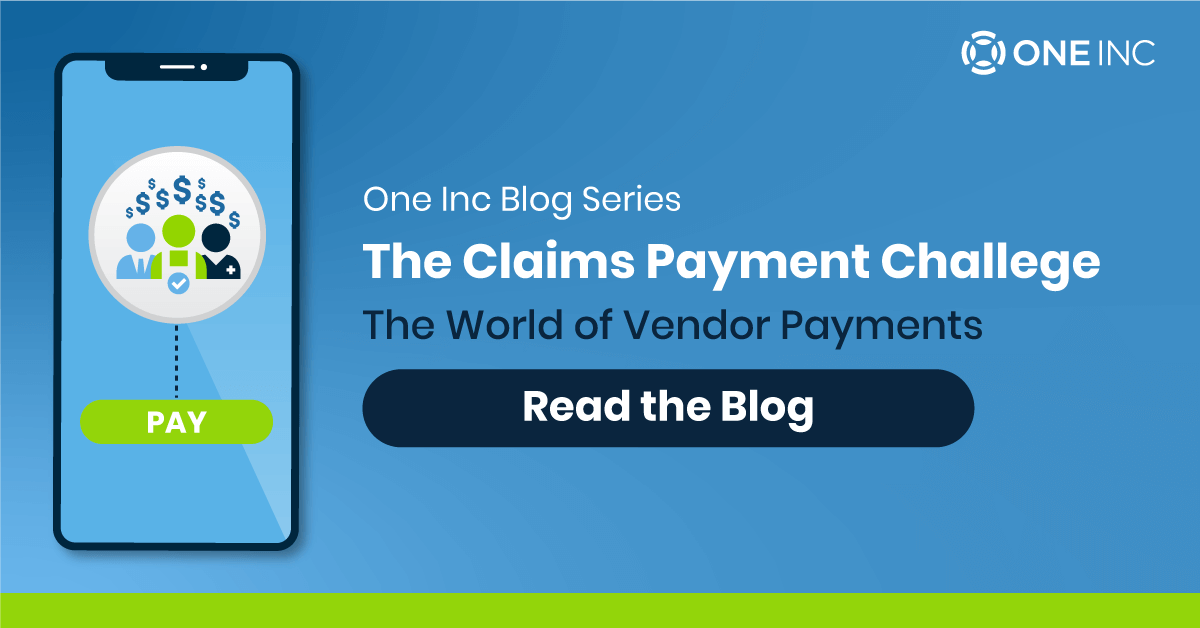| By Anne Freitas

The World of Vendor Payments (Claim Payment Challenge Part 4)
In part 3 of this four-part series, we explained the complexities of mortgagee property claim payments. Here in our final series installment, we take a deeper look into the world of vendor payments: the challenges of bulk payments, the need for detailed remittance information, and benefit of real-time reconciliation.
The World of Vendor Payments
Property and casualty insurance claims often result in payments to third parties such as: medical providers, auto body shops, car rental companies and roofing businesses. These third-party vendors can wait long periods of time to receive claim settlement checks, many times as long as 60-90 days after a service was performed. This delay in receiving funds can increase the financial instability of businesses and decrease their ability to service customers. Once they do receive a check, it can come in the form of a ‘bulk’ payment, requiring detailed remittance documentation to be attached for reconciliation purposes. Providing this information and integrating it with the actual check payment can be challenging for insurers. Understanding it can be both confusing and frustrating for vendors. In order to correctly reconcile their accounts, vendors need to be able to readily understand what payment amount correlates to which insurance carrier for which customer or patient, as well as for what specific service and service date. As one can imagine, this reconciliation process can quickly become a tedious and time-consuming burden, taking resources away from activities that strengthen the business and improve outcomes.
Medical Claim Payment Challenges
When an auto accident results in first party medical or PIP claims, property and casualty insurers will issue payments to medical service providers. These medical claim payments must meet significant regulatory requirements, including the attachment of an Explanation of Benefits (EOB) document that contains specific medically coded billable line items. This adds another level of payment complexity that can be further compounded by logistical issues. Checks may print from one centralized carrier location and EOBs may print from yet another. The carrier must then proceed with an internal delivery and match process before the checks can even be mailed to insureds and providers, causing additional complications and expense. This doesn’t even take into consideration the effort involved with continual maintenance of providers’ contact and mailing information.
The Benefits of Digital Vendor Payment
Although vendor claim payment, document attachment, and resultant reconciliation have long been pain points for both insurers and vendors, the vendor claim payment process can become much more efficient with a comprehensive digital claim payment solution. One Inc’s already established relationships with medical service providers and large national third-party vendors provide insurers with a great foundation for digital payment transformation. Due to their existing vendor relationships, streamlined, self-service vendor portal, and diligent vendor onboarding practices, carriers can experience a vendor digital adoption rate around 50%. Vendors are able to select the payment method they prefer, including EFT or virtual card payment to their Point of Sale (POS) system. Using the vendor portal, all third-party vendors can receive, view and download claim payment and remittance information directly. Both carrier and vendor resources are then able to be reallocated toward more value-added activities and initiatives that result in an improved customer experience.
The Claim Payment Challenge Blog Series:
Tags: Payments, Vendor Payments

Want to read more articles like this?

